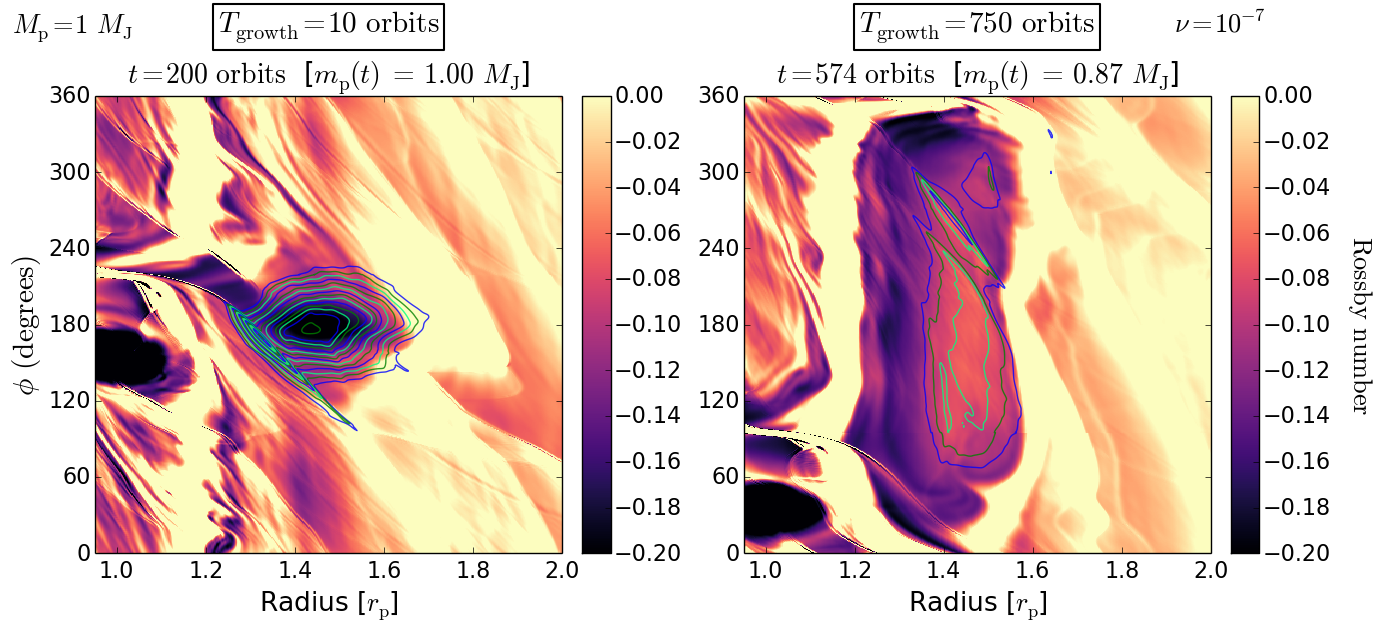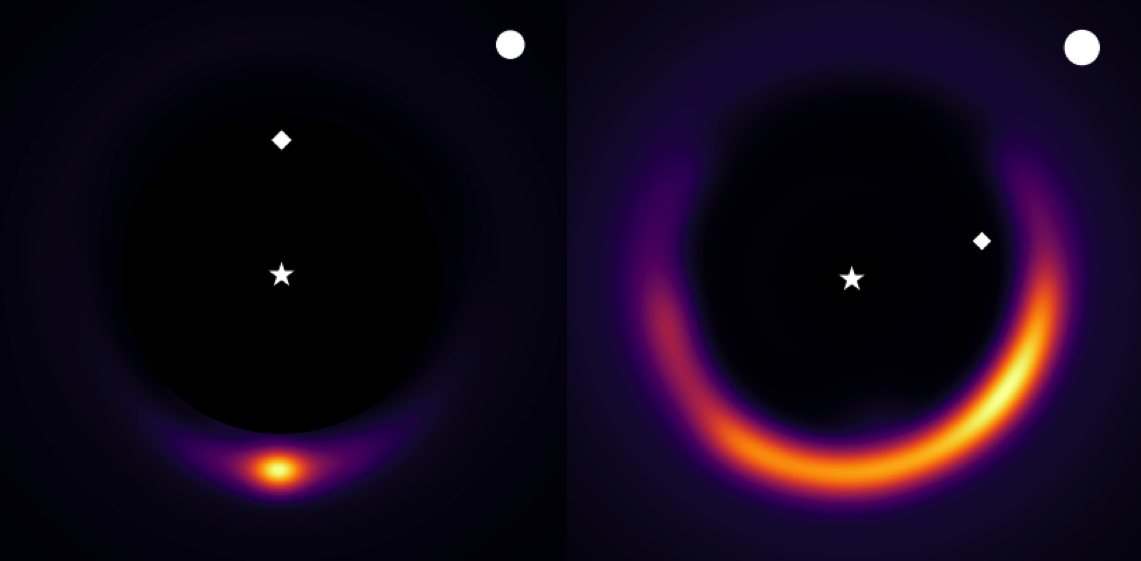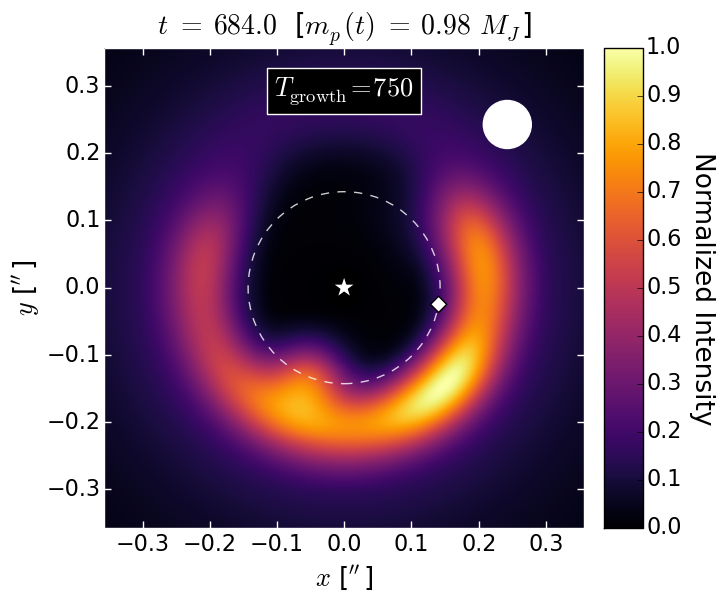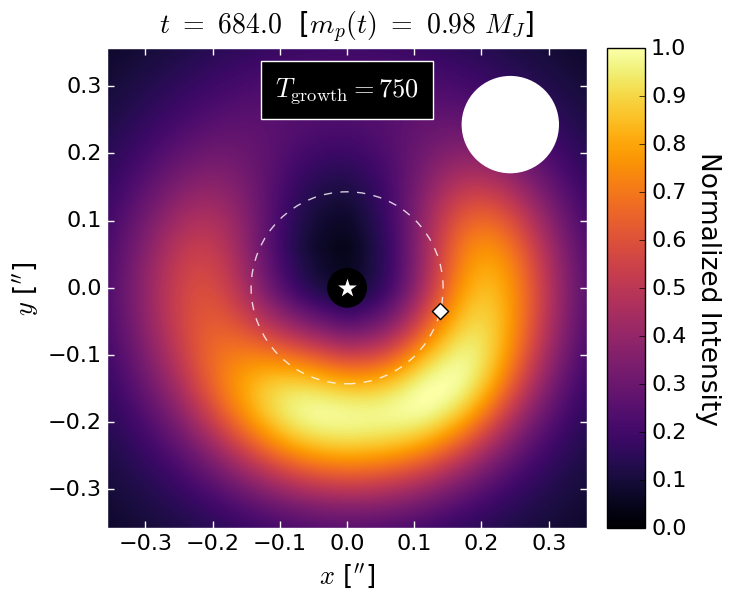Research Table of Contents
- Paper 1 (04/2017): Making simulations of planet-induced vortices more realistic.
- Paper 2 (01/2019): Connecting these simulations of planet-induced vortices to observations.
- Paper 3 (07/2021): Exploring how to extend vortex lifetimes even with realistic planet growth.
- Paper 4 (10/2023): Forming compact and other vortices that survive indefinitely.
- For the public.
Connecting these simulations of planet-induced vortices to observations.
MNRAS paper (01/2019): Observational diagnostics of elongated planet-induced vortices with realistic planet formation time-scales
SPF2 Conference presentation: SPF2.pptx, PDF Version, (Conference website here)
Ringberg Castle Workshop presentation: Ringberg.pptx, PDF Version, (Conference website here)
Our previous paper showed that elongated vortices induced by slowly-grown planets look different from concentrated vortices induced by rapidly-grown planets in the gas. But what about the dust, the component that is observed by ALMA? Naively, you might think the answer is no. Vortices trap dust at the center regardless of their shapes, right? As it turns out, you would be wrong. The figure below shows why.
Above, you can see that the elongated vortex (right) lacks a vorticity minimum and a series of smooth elliptical contours, the two main features of a concentrated vortex (left) that make it straightfoward for the vortex to trap dust in its center. Instead, the elongated vortex has a much flatter pressure bump across the majority of the vortex. As a result, it doesn't have a reason to trap dust at its center. Where does the dust go instead?

As the figure and movie above both show, the elongated vortex still easily traps dust. But instead of ending up at the center, the dust circulates around the vortex! As a result, elongated vortices are just about as elongated in the dust as they are in the gas. Another key signature of these vortices is that the peak dust concentration is typically located off-center, often by more than 30 degrees! Below, let's compare synthetic images of both concentrated and elongated vortices to the ALMA image of HD 135344B at the top of the page.
The image on the right above does a better job at reproducing the elongated extent of the crescent in HD 13544B. Unlike the concentrated vortex, it also has an off-center peak, just like the crescent from that real ALMA image. These two signatures make the asymmetry in HD 13544B an excellent elongated planet-induced vortex candidate.
Bonus: What beam diameter do I need to detect signatures of elongated vortices?
That's a good question. The figure below shows a comparison of synthetic images of the same snapshot of an elongated vortex with three different beam sizes: half the planet's semimajor axis, equal to the planet's semimajor axis, and one and a half times the planet's semimajor axis (equivalent to about the vortex's semimajor axis). The first two beam sizes seem sufficient for a face-on disk, while the last one is not good enough. (That statement is quantified in the paper.)
Contact Info
Find me in my office, or send me an email!




